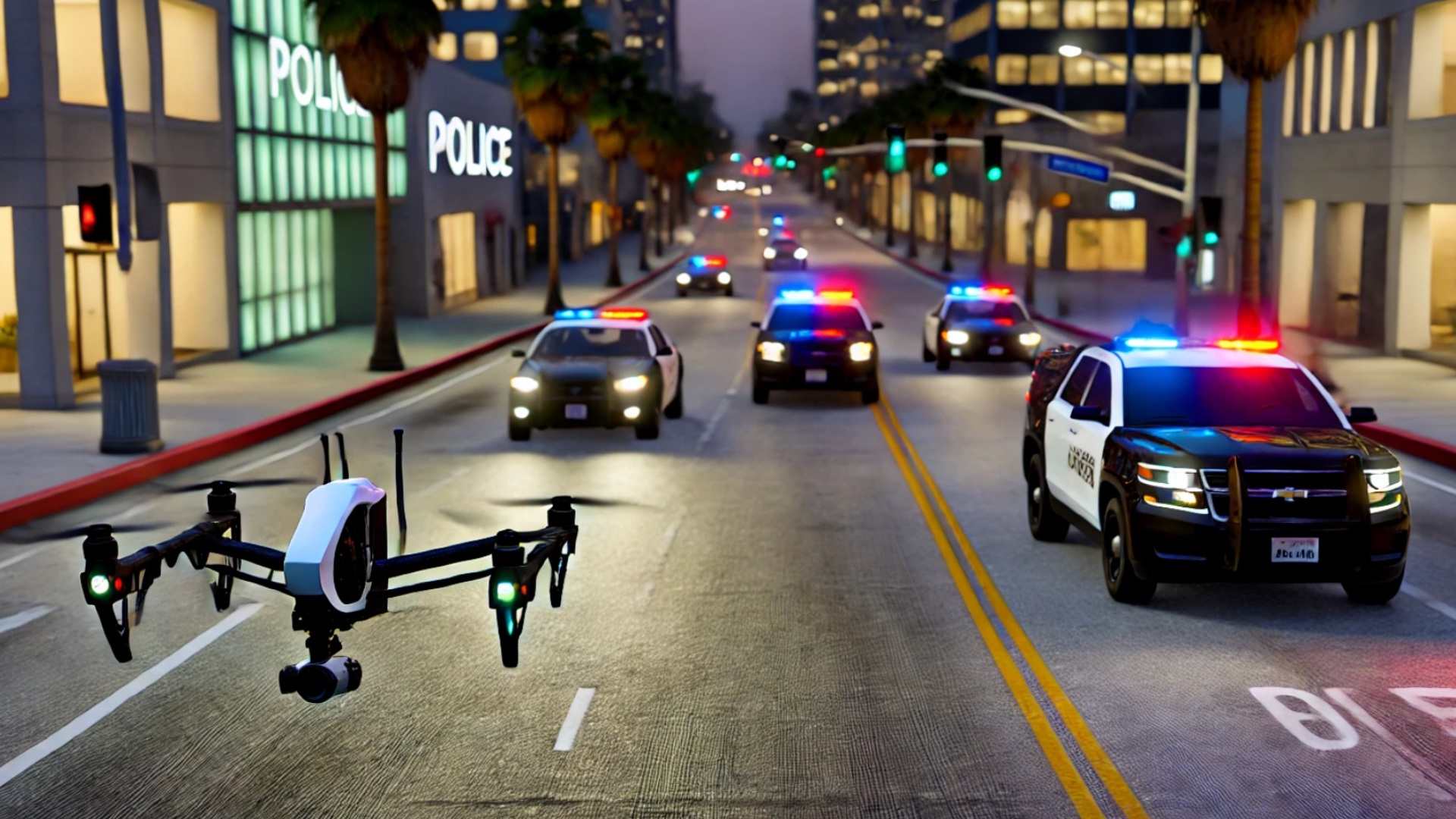
As West Hollywood prepares to allow the Sheriff’s Department to use drones and other technologies in patrolling and keeping the peace, the Public Safety Commission on Monday looked for warning signs in the city’s policy on cutting-edge tools in law enforcement.
The one-year pilot program will deploy drones, a.k.a. Unmanned Aerial Vehicles (UAVs), within a three mile radius of the city, operating at altitudes of 300 to 400 feet.
Sgt. Jason Duron explained how it works.
“If we get a call for service, that call for service gets typed into our computer systems and our radio,” he said. “Our drone pilot or the drone operator would hear those calls and see those calls dispatched. The drone out remotely transmit that information to our patrol deputies that are out in the field. The patrol deputies would be able to see the drone footage on either their cell phone or their computers in the vehicle. So the drone would be prepared to respond pretty much immediately to any calls for service.”
The drones will be integrated into the city’s new Real-Time Watch Center, housed within the WeHo Sheriff’s Station, which will consolidate video feeds from 40 fixed cameras and data from automatic license plate readers to facilitate rapid emergency response.
Fixed cameras store footage for 365 days, as mandated by state law, while drone footage is retained for 30 days, subject to policy updates and community feedback.
Initially, the pilot program will contract with a company capable of providing several drones and trained pilots, ensuring coverage during peak hours when call volumes are highest, with flexibility to expand pilot shifts and drone availability..
The program’s success hinges on its ability to integrate new technologies seamlessly into existing law enforcement practices while maintaining public trust.
Commissioners expressed concerns about policy enforcement within the Sheriff’s Department’s jurisdiction and the potential for policy overrides. Public Safety Director Danny Rivas clarified that program policies are binding for all department personnel, subject to internal investigation and possible sanctions for violations, with regular updates provided to the City Council to ensure transparency and community oversight.
Throughout his presentation, Rivas drove home the message that the drones would not be used for surveillance. WeHo’s drone program draws heavily from the city of Chula Vista, one of the pioneering municipalities in drone-as-first-responders nationwide, which was recently the subject of cover story by WIRED.
Chula Vista’s program, which began in October 2018, deploys drones in response to live 911 calls, covering various incidents from minor disturbances to serious crimes. Residents there have expressed both appreciation for the drones and concerns about them capturing video footage indiscriminately.
While the police claim the drones provide valuable intelligence and reduce unnecessary police contact, approximately 10% of drone flights could not be linked to specific incidents or 911 calls, raising questions about the transparency and accountability of the DFR program.
Rivas outlined the next steps for West Hollywood, including seeking input and feedback from the City Council on the proposed draft policies. If approved, the implementation of the one-year pilot program would take about 180 days. The real-time watch center’s functionality is contingent on the approval of drone use or fixed cameras. The pilot program will involve contracting services and equipment, with a finance department and city attorney overseeing the process. If the pilot is unsuccessful, the equipment can be returned.

[…] Council on Monday narrowly approved new technologies for the Sheriff’s Department including a drone-as-first-responder program, a real-time watch center and fixed real-time cameras throughout the […]
It’s interesting to see how police drones will be used in WeHo. They could help with monitoring large events, traffic control, and increasing overall safety.
How many drones are “several?”
They defund the police, foment social chaos, and erode our liberties. Problem—action—solution. Automated policing and surveillance is NOT the answer. These technologies always are introduced promising limited use, but use application and capacity AWAYS expands— it’s called “technological creep”. Unfortunately, people tend to be short sighted when it comes to surveillance technologies. But if they understood what the end goal is and worked backwards from there, people would NOT support this. 15-minute Smart Cities, biometric surveillance, CBDC’s linked to social credit score, pre-crime programs and the end of privacy as a concept is the game plan…and West Hollywood is eager… Read more »
I was opposed when I first read about this.
Still am opposed.
“Not to be used for surveillance” is the likely culprit.
10 drones will be like having 40 officers!
OK, yeah, sure, but one question remains, the most important one: How will Septic Shyne make money on this??
This is great, as long as they’re not used for surveillance of city streets trying to find people they can then arrest for “lewd conduct“.
Or arrest people for not wearing a mask…or arrest people for going to the beach that they lock down for our “safety”
🎯 🎯 🎯
Great! Let’s get them in the air!
Let’s it this program off the ground and flying.